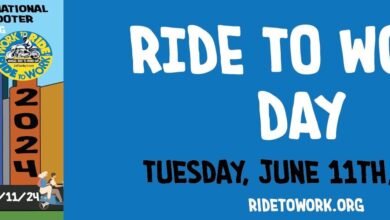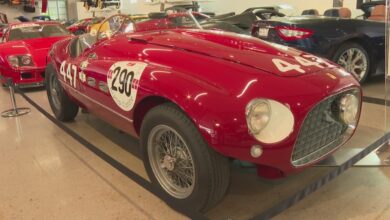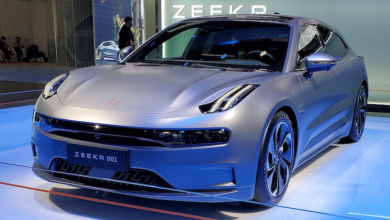Early automobiles in Colorado sparked enthusiasm and angst | First Draft

Colorado joined the automobile age just before the turn of the 20th century. Motoring in Mesa County began a few years later. But ownership of motorcars grew rapidly. So did complaints about the dangers of the new machines.
The first Colorado-owned automobile arrived in Denver by train in May 1899. Owner David W. Brunton had ordered the Columbia electric auto from Boston. On May 10, Brunton wrote in his diary, “Ran electric carriage on the streets in Denver.”
Eight months later, a Postal official from Washington, D.C., predicted that mail carriers would be using automobiles in Denver “in the near future.” He also said there were 10,000 autos in Europe then, but no more than 2,000 in the United States.
A decade later, that number had ballooned to almost half a million U.S. autos, according to a federal report.
The first recorded visit of an automobile to Grand Junction occurred on April 23, 1901. “It was an advertising attraction of the minstrel show” then visiting the city, The Daily Sentinel reported.
The first auto owned in Mesa County was purchased by John Beard, a druggist in Fruita. He bought it in partnership with his father, Fruita physician and inventor James Beard. A few years later, James Beard worked with a local mechanic to build his own electric car.
Within a year after Brunton bought his auto, at least a half-dozen other prominent Denverites had purchased motorcars. There were electric cars, steam-powered ones and, by 1901, gasoline-powered internal-combustion engines. Usually, the driver sat on the right side.
One of the most popular early automobiles was a steam-powered, Connecticut manufactured Locomobile. The owner of a Denver bicycle shop, W.B. Felker, began selling them in 1900, and he was responsible for the first automobile advertisement to run in the Denver Post on May 1, 1900. He offered a two-seater Locomobile for $750.
In September 1900, John Brishen Walker, the founder of Locomobile, traveled to Colorado and made the first attempt to drive up Pike’s Peak. He reached 11,000 feet before turning back. In August the next year, Felker made it to the summit of Pike’s Peak in one of his Locomobiles.
The steam-powered Locomobiles were powerful but prone to catch fire. So, in 1904, Locomobile abandoned steam power for gasoline. In a famous 1905 photo, Apache leader Geronimo and other Indians are seated in a 1904 Locomobile, not a Cadillac.
New developments occurred quickly in the early years of the 20th century. The first internal-combustion automobile in Colorado, an Oldsmobile, was bought by a Cañon City doctor in 1901. On its first trip through town, it frightened a horse, causing a buggy to flip and injure the driver.
Also that year, the first trip to Estes Park in a motorcar was recorded, and another man crossed the Continental Divide after shipping his vehicle by train to Leadville.
On Jan. 15, 1902, the Rocky Mountain News reported that E.S. Matheson had achieved a dubious distinction. He was the first auto driver in Denver to be fined for traveling “at a speed which endangered the lives of pedestrians.”
Automobiles weren’t common in Grand Junction by 1902, but concerns about them were prominent in local newspapers, worries that they would spook horses, cause wrecks and discourage people from walking. Still, in July 1902, the Sentinel declared that despite their problems, automobiles “are here and to stay” and no legislation “can check their destiny.”
Additionally, as early as 1901, work had begun on “the State Road,” from Denver to Grand Junction through Glenwood Canyon.
There were also articles about accomplishments with motorcars: the first race from Denver to Colorado Springs in May 1902, which Felker won in a Locomobile; the first trip from Denver to Pueblo in September 1902, which took seven hours and 45 minutes; a 1902 list of Denver women who owned or drove automobiles.
In January 1903, the Sentinel said a man named D.T. Clark of Denver made the trip from Denver to Grand Junction in an automobile. He went by way of Cañon City, but broke down between Buena Vista and Leadville. He shipped his auto to Palisade by rail.
Also in 1903, a man sought Grand Junction City Council approval for a franchise for an automobile livery service — today we call them taxis. It was not approved.
Three men traveling from San Francisco to New York in a Packard stopped here in July 1903. It had taken them 18 hours to journey from Thompson Springs, Utah, to Grand Junction.
In May 1904, two Grand Junction doctors, Knude Hanson and H.R. Bull, became the first automobile owners in the city. They “each purchased Rambler runabout automobiles in which they will hereafter call on their patients,” the Sentinel said.
Two months later, the Sentinel reported on the first wreck caused by an automobile. A horse pulling a carriage driven by local merchant C.D. Smith spooked when it encountered Bull and his motorcar. Smith and his wife were thrown from the carriage and suffered minor injuries.
In 1903, a new law in Denver required auto owners to “take out a license and display the number of the vehicle in large figures.”
Many municipalities followed suit in the next few years. But it wasn’t until 1913 that Colorado enacted statewide automobile registration. Money from the licenses was to help improve roads.
Building better roads was critical to the future of motoring. In December 1904, D.T. Clark, who had made the Denver-to-Grand Junction auto trip in 1903, abandoned a second journey. “The character of the roads robbed the trip of any pleasure it might otherwise have had,” the Sentinel said.
The Colorado Automobile Club, organized in 1902, stated one of its goals was “to promote the good road movement.” The Club held statewide meetings in 1905 and 1906 to seek road improvements. At the 1906 meeting, it drafted proposed legislation to create a state Highway Commission and establish a system of state roads.
Congratulatory telegrams were sent to Colorado from officials in Washington, D.C., including President Teddy Roosevelt. The president may have had personal reasons for desiring good Colorado roads.
During his 1905 hunting trip to the Western Slope, Roosevelt took a wireless telegraph machine to his hunting camp so he could stay in touch with his team in Washington. “An Army automobile will convey the field outfit as far as roads will permit,” the Sentinel reported, “after which the machines will be transferred to the backs of horses.”
The first attempt at creating a state Highway Commission was unsuccessful, but the Auto Club and its allies kept trying. In 1909 it was approved, along with $50,000 to build roads.
The 1913 law raised additional money through license fees on more than 13,000 autos, motorcycles and trucks then in Colorado. The fees were split with the counties where the vehicles were registered.
In Mesa County, that only resulted in $987.50 the first year, the county’s share of the license fees from 211 automobiles and 52 motorcycles.
Sources: “The Coming of the Automobile and Improved Roads to Colorado,” by LeRoy R. Hafen, The Colorado Magazine, January, 1931; “Motor Vehicle Registrations by State, 1900-1995,” Federal Highway Department; Historic newspapers at www.newspapers.com.
Bob Silbernagel’s email is bobsilbernagel@gmail.com.



